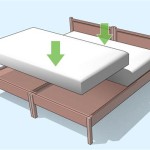How Far Will Bed Bugs Travel?
Bed bugs, those tiny, nocturnal bloodsuckers, are notorious for their ability to hitchhike into homes and wreak havoc. One of the most concerning questions homeowners face when dealing with a bed bug infestation is: how far will they travel? The answer, unfortunately, is not straightforward and depends on several factors, including the bed bugs' life stage, the environment, and the availability of food sources.
The Life Stage of Bed Bugs
Bed bugs go through five developmental stages, starting as eggs and progressing to nymphs before reaching adulthood. Each stage has different capabilities and motivations for movement. Eggs, for instance, are immobile and rely on their environment to facilitate their development. Nymphs, on the other hand, are active and mobile, searching for food and shelter. Adult bed bugs, the most mobile stage, are capable of traveling relatively long distances in search of a blood meal.
The distance a bed bug can travel increases with its age and size. Adult bed bugs, with their longer legs and more developed bodies, can traverse significantly greater distances than nymphs. This is especially true for female bed bugs, which require blood meals to produce eggs and spread the infestation.
Environmental Factors
The environment plays a crucial role in determining how far bed bugs can travel. Temperature, humidity, and the presence of obstacles all influence their movement. For instance, bed bugs thrive in warm and humid environments, making it easier for them to move around and avoid drying out. They can also navigate through cracks and crevices, making it challenging to confine their movement.
The presence of obstacles, such as furniture, walls, and carpets, can also hinder bed bug travel. While bed bugs can crawl over surfaces like carpets and climb walls, they may struggle to traverse smooth surfaces, particularly those that lack texture or grip. This is why minimizing clutter and keeping furniture away from walls can help restrict their movement.
Availability of Food
The availability of food sources is a major factor in how far bed bugs will travel. Bed bugs are primarily attracted to human blood, and their movement is often dictated by their hunger. When food sources are plentiful, they may stay close to their host. However, when food is scarce, they will travel farther distances, often seeking out new hosts.
Bed bugs can survive for extended periods without feeding, sometimes for months. This allows them to travel great distances, even if they are not actively seeking a blood meal. However, once they find a suitable host, they are likely to stay close to their food source, establishing a nest and reproducing.
Understanding Bed Bug Movement
Understanding how bed bugs move is crucial for effective pest control. Identifying the likely routes of travel, potential hiding places, and factors that influence their movement can help homeowners develop a comprehensive plan for bed bug prevention and control. This includes inspecting furniture, mattresses, and carpets regularly, sealing cracks and crevices, and using appropriate pest control measures.

If One Room Has Bed Bugs Do They All Plus How To Prevent The Spread

Bed Bug Travel Tips Prevention Cowleys Pest Services Of Nj

Can Someone Who Has Bed Bugs Bring Them To Your House

How Far Can Bed Bugs Travel Arrow Exterminating

How To Deal With Bed Bugs When Travelling Finding The Universe

How To Find Bed Bugs During The Daytime Forbes Home

Can Someone Who Has Bed Bugs Bring Them To Your House

How Far And Fast Do Bed Bugs Travel Within Homes At Night

What To Do If Your Neighbor Has Bed Bugs Find Out Now

How To Get Rid Of Bed Bugs While Traveling Destinationless Travel







